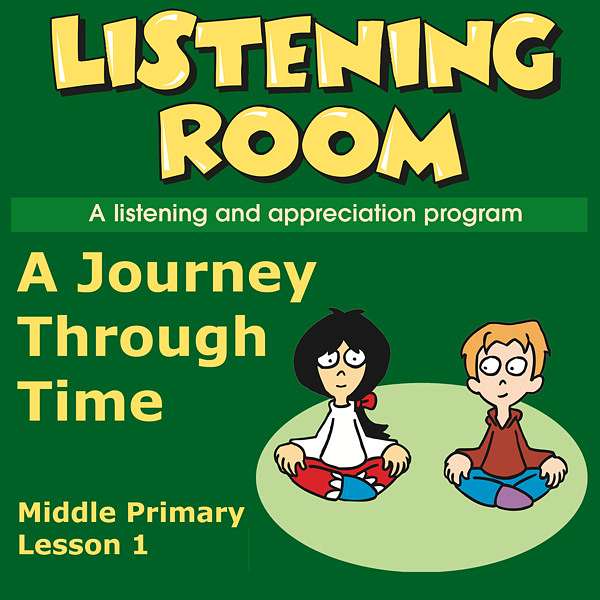
The Listening Room Podcast
The Listening Room Podcast
A Journey Through Time - A Listening Room Podcast for Middle Primary Students
This episode is the first lesson from Listening Room 2,
published by Bushfire Press. It is a Journey through Time.
This lesson provides guided listening and movement activities with links to optional follow-up activities.
Perfect to help young people stay grounded and broaden their experience and appreciation of classical music.
Links to all support material including a page for children and guides and assessment materials for teachers can be found at www.thelisteningroom.net
ABOUT THE PIECES
Also Sprach Zarathustra, Fanfare ‘Sunrise’
(from tone poem Also Sprach Zarathustra 1896)
Richard Strauss (German 1864-1949, late romantic period)
The fanfare is the introduction to a 30 minute piece which was inspired by the philosophical novel of the same name by Friedrich Nietzsche. The composer called those familiar 3 notes (C-G-C) the ‘dawn motif’.
Trumpet Voluntary
(Prince of Denmark’s March c 1700)
Jeremiah Clarke (English 1674-1707, baroque period)
The march was written in honour of Prince George of Denmark, husband of Queen Anne of Great Britain. It was played during the wedding of Prince Charles and Lady Diana Spencer in 1981.
A trumpet voluntary is most commonly played on the organ using the trumpet stop.
Piano Concerto #23 - 2nd Movement (1786)
Wolfgang Amadeus Mozart (German 1756-1791, classical period)
A concerto is an extended piece in three movements for orchestra and solo instrument. Mozart wrote 27 piano concerti as well as concerti for violin, flute, French horn and clarinet.
An American in Paris - Introduction (from An American in Paris 1928)
George Gershwin (American, 1898-1937, modern period)
An American in Paris is a jazz-influenced symphonic poem inspired by the time the composer spent in Paris. When it was first performed in New York in December 1928 it used taxi horns which Gershwin brought back from Paris.